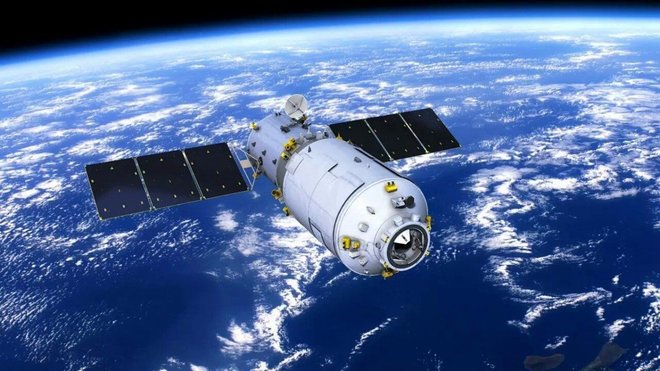The Tiangong-1 space station has been the subject of a lot of interest lately. Though its mission was meant to end in 2013, the
China National Space Agency
extended its service until 2016. In September of 2017, after much speculation from the international community, the Agency
acknowledged
that the station's orbit was degrading and that it would fall to Earth later in the year.
Based on
updates
from satellite trackers, it has been indicated that Tianglong-1 will likely reenter our atmosphere in
March of 2018
, with the possibility of debris making it to the surface. However, according to a
statement
made by a top engineer at the
China Aerospace Science and Technology Corporation
(CASTC), reports that the Chinese National Space Agency (CNSA) has lost control of the space station have been wildly exaggerated.
The statement came from Zhu Congpeng, a top engineer at the China Aerospace Science and Technology Corporation (CASTC). As he was quoted as saying to the
*Science and Technology Daily*
newspaper - a state-backed Chinese science journal - the CNSA is still in control of the space station, it's reentry will be controlled, and it will not pose a threat to the environment or any population centers.
[caption id="attachment_130983" align="aligncenter" width="580"]
Artist's illustration of China's 8-ton Tiangong-1 space station, which is expected to fall to Earth in late 2017. Credit: CMSE
[/caption]
Previously, the CNSA claimed that the majority of the station would burn up in orbit, with only small pieces falling to the Earth. But according to Zhu Congpeng's statement, when the station burns up in the atmosphere, the remaining debris will not jeopardize people, infrastructure or the environment anywhere on the surface. As Zhu Congpeng
stated
:
As with previous missions - like the Mir space station, the Russian Progress spacecraft, and NASA's Compton Gamma-Ray Observatory - the
designated crash site is a deep-sea area in the South Pacific known as the "spacecraft cemetery". As a further indication that the CNSA is still in control of Tiangong-1, Zhu claimed that the CNSA has been constantly monitoring the space station since the end of its mission.
"The latest bulletin shows that on December 17-24, 2017, Temple One runs on an orbit with an average height of about 286.5 kilometers (height of about 272.6 kilometers near perigee, height of about 300.4 kilometers at apogee and inclination of about 42.85 degrees), attitude stability," he said. "There is no abnormal morphology."
[caption id="attachment_138186" align="aligncenter" width="580"]
The Aerospace Corporations predicted reentry for Tiangong-1. Credit: aerospace.org
[/caption]
He also emphasized that the station's reentry was delayed until September in order to ensure the the wreckage would fall into the South Pacific. In other words, the position of Tiangong-1 is something the Chinese have been monitoring closely, and they will continue to do so when it reenters the atmosphere this coming March. This latest statement comes on the heels of statements made by both
China's manned space engineering office
and the Aerospace Corporation, which appeared to offer a different appraisal.
Back in
mid-September, Wu Ping - the deputy director of China's manned space engineering office - stated at a press conference that there was some chance that debris would land on Earth. While she was insistent that the odds of any debris surviving the passage through Earth's atmosphere were minimal, it did suggest that the reentry would be uncontrolled.
This echoed the comprehensive report recently issued by the A
erospace Corporation, which stated that the Chinese space agency was unlikely to remain in control of Tiangong-1's for the entirety of its reentry. Much like Wu, they also emphasized that the majority of the station would burn up on reentry and that it was unlikely that any debris would make it to the surface and cause damage.
As such, its not entirely clear if the reentry will be entirely controlled or not. But even if it should prove to be the latter, there is little reason to worry. As the Aerospace Corporation stated in their report:
[caption id="attachment_131650" align="aligncenter" width="580"]
Banxing-2 snaps Tiangong-2 and Shenzhou-11 using a fisheye camera. Credit: Chinese Academy of Sciences
[/caption]
On top of that, the European Space Agency's
Inter Agency Space Debris Coordination Committee
(IADC) will also be monitoring the reentry closely. They'll also be using the occasion to conduct a test campaign designed to improve the accuracy of reentry predictions. And so far, all their predictions indicate that come March, people on Earth will be safe from falling debris.
So if you happen to live close to the equator, this coming March is sure to be an exciting time for sky-watchers! And if there's any chance of debris landing where you live, you can sure you'll hear about it well in advance.
Further Reading: Independent
,
STDaily
 Universe Today
Universe Today
